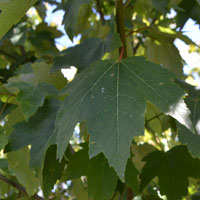
The best selling point for this specimen would have to be the unique silver coloring on the under side of the leaves. It can reach 100 feet tall very easily, and I’ve seen many just under 10 years old that are already 50-60 feet tall. But most other Sycamores just don’t do as well along the Gulf Coast as the Mexican Sycamore. Sycamores, in general, produce an enormous leaf-drop. Hard freezes (single-digit temperatures) in the winter could kill a Mexican oak.įirst, it’s all about raking leaves. It can reach 70-80 feet at maturity in Texas, but is known to reach 100 feet in Mexico. The Mexican oak used to be more readily available, but it has fallen out of popularity. It will not grow as tall as the previously mentioned oaks - normally, it matures at about 40 feet. That translates into the need for little, if any, pruning. I really like the overcup because of its upswept branches. This oak is not common at garden centers, but it is catching on in popularity among landscapers. On the down side, it can often be mislabeled and is not as readily available as the Shumard. The Nutall (often labeled a swamp red oak) also likes the clay soils of the Gulf coast. For the botanically savvy, one sure way to tell the difference between the Shumard and the Nutall is the Nutall’s over-sized acorns with their unique stripe. Similar to the Shumard in many ways, the Nutall has excellent fall color. On the down side, like the green ash, the Shumard can often be one of the last to re-leaf in the spring. Quite possibly, the Shumard’s biggest selling point could be its easy adaptability to our alkaline soils. Its popularity is also driven by some wonderful autumn color. It can grow rapidly, possibly 50-60 feet at maturity, and will have a spread of possibly 40 feet at maturity.
#Drummond red maple professional
The Shumard is one of the most popular landscape trees among professional landscapers in Texas. It may not, however, be readily available at local nurseries.
#Drummond red maple plus
On the plus side, the white ash/Texas ash also provides some stunning color in the fall if we get cooler temperatures. However, because of its rapid growth rate, it can often shoot straight up and not provide the canopy we desire in a shade tree until it is many years old. It can reach 70-75 feet at maturity, and like the green ash, it’s not susceptible to many diseases or insect pressures. The white ash (often called the Texas ash) grows even faster than the green ash. The down side to the green ash, is that it’s usually the last of all trees to leaf out in the spring. Most green ashes at nurseries and garden centers will already be much taller.


In fact, I planted a one-foot sapling six years ago, and it’s already 20 feet tall. It can normally reach 50-60 feet at maturity and excels in all three of the provisions. Every green ash I’ve planted has been a stunning success. The Arizona ash is not recommended because of its short life span - roughly 20 years. The old saying “ash is trash” holds true for the Arizona ash, but the green ash is anything but. For example, many times an Arizona ash is just labeled as an “ash.” I would strongly recommend avoiding such trees.īe careful here. It is important to confirm the botanical name when buying any of these trees, because often they can be generically labeled. Note that in the list below, each tree is accompanied by its botanical name. They GROW FAST, provide AMPLE SHADE and are ACCLIMATED TO OUR SOILS. The other twelve trees meet three very important requirements. While live oaks are also great trees to plant in Gulf Coast landscapes, they are notoriously slow growers. There are roughly a dozen trees I believe fall into the category of the “best tree to plant.” All but the live oak are deciduous, meaning they lose their leaves in the winter. Unfortunately, there’s really not one “silver bullet” answer.


 0 kommentar(er)
0 kommentar(er)
